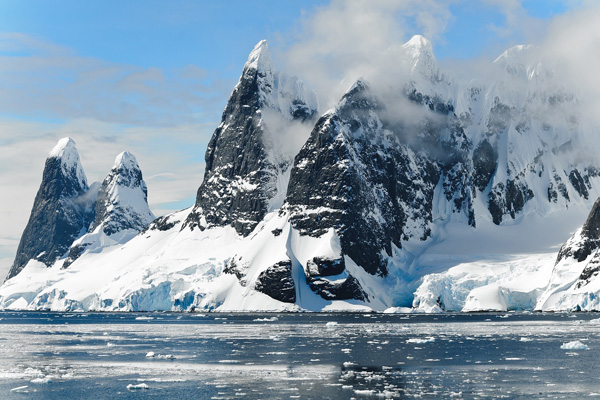AI reveals the hidden pace of glacier erosion

[Glacier. Photo Credit to Pixabay]
In August 2025, the journal Nature Geoscience published a groundbreaking study titled “Drivers of global glacial erosion rates.”
The paper, led by researchers from the University of Victoria, applied advanced machine- learning tools to estimate how quickly glaciers erode bedrock around the globe.
Covering nearly 180,000 glaciers, about 85 percent of those known to exist, the study provided the first truly global view of a process that has shaped landscapes for millennia.
The results surprised even experienced glaciologists.
The analysis showed that 99 percent of the world’s glaciers erode at rates between 0.02 and 2.68 millimeters per year, roughly the thickness of a credit card.
While that may sound insignificant, the impact accumulates dramatically over centuries and millennia.
Glaciers are not only melting reservoirs of freshwater but also powerful geological agents.
Until now, however, the pace of erosion remained poorly understood.
Early studies in the 20th century attempted to measure it directly by drilling through ice and installing instruments near the glacier beds.
Others estimated erosion indirectly by analyzing the amount of sediment carried in glacial streams.
For decades, many scientists assumed that glacier speed was the dominant factor controlling erosion.
Yet the available field data came mostly from accessible sites in Europe and North America, and results often conflicted.
By the early 2000s, satellites and geographic information systems expanded observation to larger regions.
Even so, vast knowledge gaps persisted, especially in remote areas such as the Arctic and the Himalayas.
The new study broke through these limits.
By combining machine-learning models with a wide range of environmental data, including rainfall, glacier height and length, latitude, and underlying geology, researchers found that erosion depends on many factors acting together.
This represents a shift away from the long-held “velocity-driven” perspective, an idea that glacier speed alone controls erosion, toward a more nuanced view of glacier–environment interactions.
“The conditions that lead to erosion at the base of glaciers are more complicated than we previously understood. Our analysis found that many variables strongly influence erosion rates: temperature, amount of water under the glacier, what kind of rocks are in the area, and how much heat comes from inside the Earth,” said Sophie Norris, an assistant professor of geography at the University of Victoria.
The implications extend well beyond academic interest.
Reliable erosion estimates help predict how landscapes change, how sediment moves into rivers and reservoirs, and where natural hazards such as landslides may occur.
They are also critical in evaluating geological stability for infrastructure like nuclear waste storage, which must remain safe for thousands of years.
The results highlight the fragile connection between glaciers and climate.
As glaciers retreat under warming conditions, erosion patterns will change, potentially altering ecosystems and water supplies for millions of people.
In some regions, rapid melting could initially accelerate erosion, while in the long term, the disappearance of ice could halt it altogether.
Glaciers have often been described as Earth’s slow sculptors: seemingly motionless, yet constantly shaping the world around them.
Thanks to artificial intelligence, scientists now have a sharper lens to understand these forces.
The University of Victoria team’s research not only addresses one of glaciology’s longest-standing questions but also provides insight essential for meeting the environmental challenges ahead.

- Yehan Kim / Grade 9 Session 11
- Lexington High School

![THE HERALD STUDENT REPORTERS [US]](/assets/images/logo_student_us.png)
![THE HERALD STUDENT REPORTERS [Canada]](/assets/images/logo_student_ca.png)
